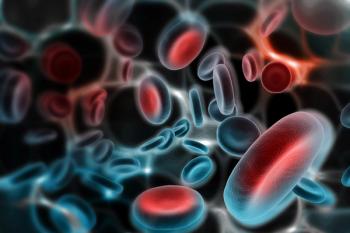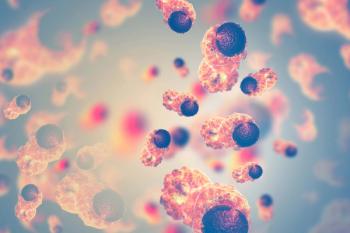
Clonal Hematopoiesis May Raise Risk of Blood Cancers
Clonal hematopoiesis with somatic mutations is strongly associated with the risk of developing blood cancers, according to a new study.
Clonal hematopoiesis with somatic mutations is strongly associated with the risk of developing blood cancers, according to a new study. That phenomenon, more strictly defined as clonal expansion among hematopoietic stem cells, is increasingly common as age increases.
“Hematopoietic stem-cell population dynamics may precede many hematologic cancers, including myeloproliferative neoplasms, myelodysplastic syndromes, acute myeloid leukemia, and chronic lymphocytic leukemia,” wrote study authors led by Giulio Genovese, PhD, of the Broad Institute of MIT and Harvard in Cambridge, Massachusetts. Various mutations could play a role in clonal hematopoiesis, and sequencing is now common enough in many clinical trials and general practice that testing whether those somatic mutations could precede development of blood cancers has become feasible.
In the new study, the researchers analyzed whole-exome sequencing data in peripheral blood cells of 12,380 people, unselected for cancer or any hematologic phenotype. Results were
They found that clonal hematopoiesis with somatic mutations occurred in 10.4% of people older than 65 years, but in only 0.9% of people under the age of 50. The most frequently involved somatic mutations were in three genes: DNMT3A, ASXL1, and TET2. These have previously been implicated in hematologic cancers, the researchers noted.
Of the total cohort, 31 participants received a hematologic cancer diagnosis more than 6 months after DNA sampling. Those with clonal hematopoiesis were significantly more likely to receive such a diagnosis, with a hazard ratio (HR) of 12.9 (95% CI, 5.8-28.7; P < .001). Thirteen of the 31 cancer patients (42%) had shown clonal hematopoiesis in their initial DNA sample. Those with clonal hematopoiesis also had an increased risk of death, with an HR of 1.4 (95% CI, 1.0-1.8; P = .03).
The authors noted that cancer-associated mutations alone are not enough to diagnose hematologic cancer, though they may signify an elevated risk. “In the future, however, it may be possible to refine our DNA analysis in order to develop strategies for early detection and even prevention of hematologic cancer,” they wrote.
In an
Newsletter
Stay up to date on recent advances in the multidisciplinary approach to cancer.


















































































